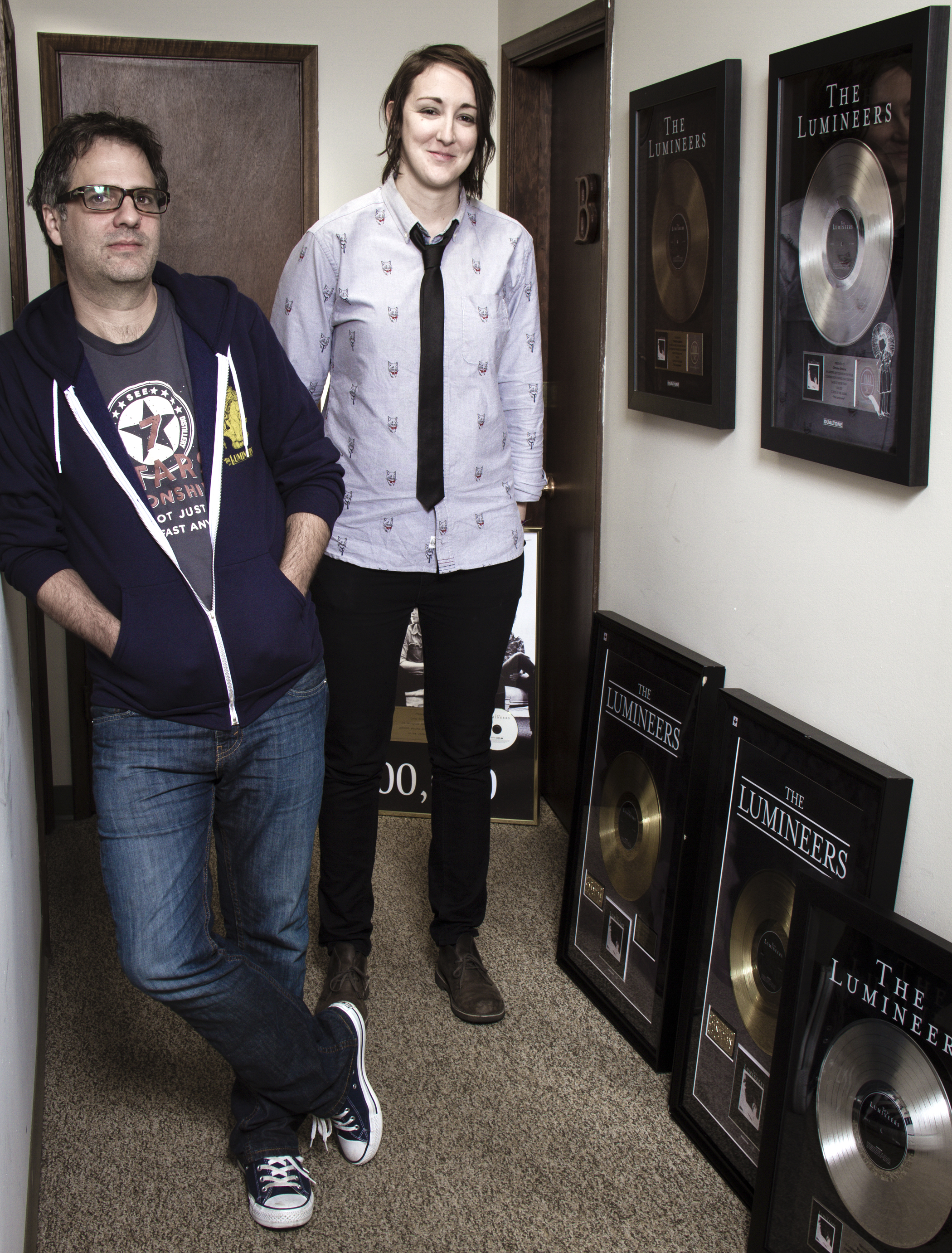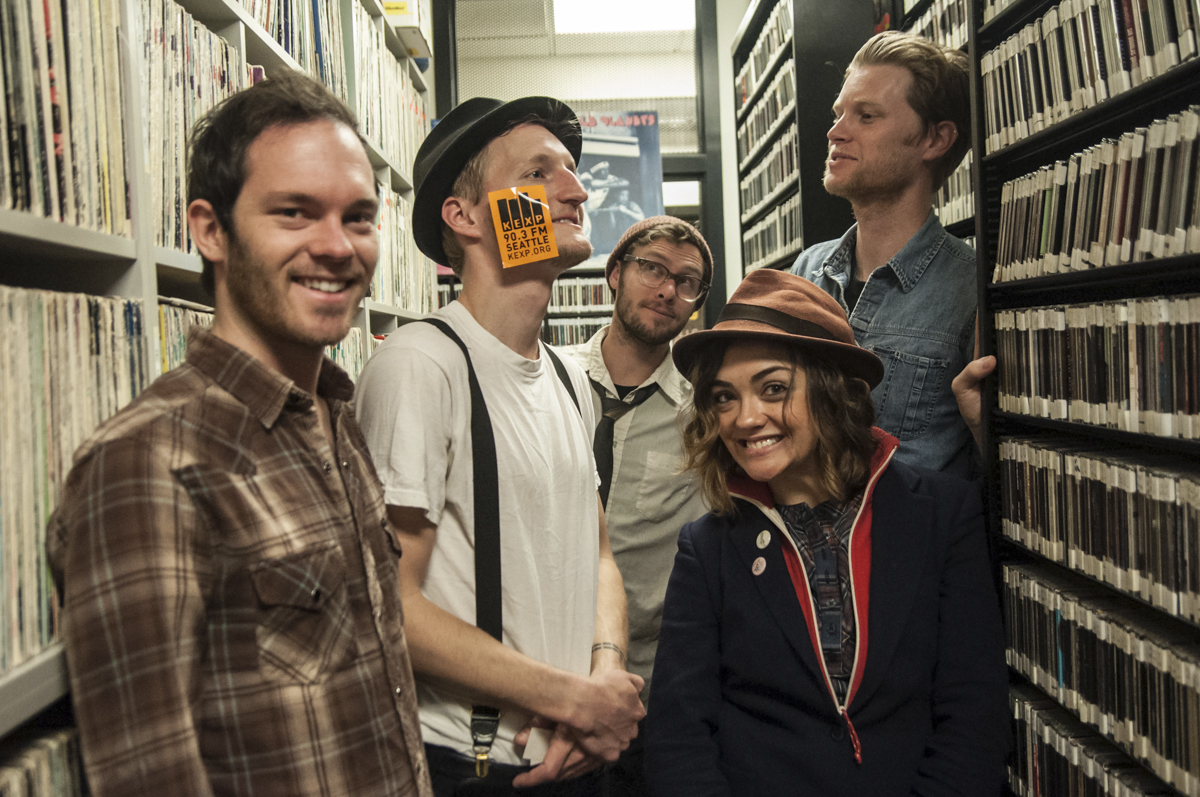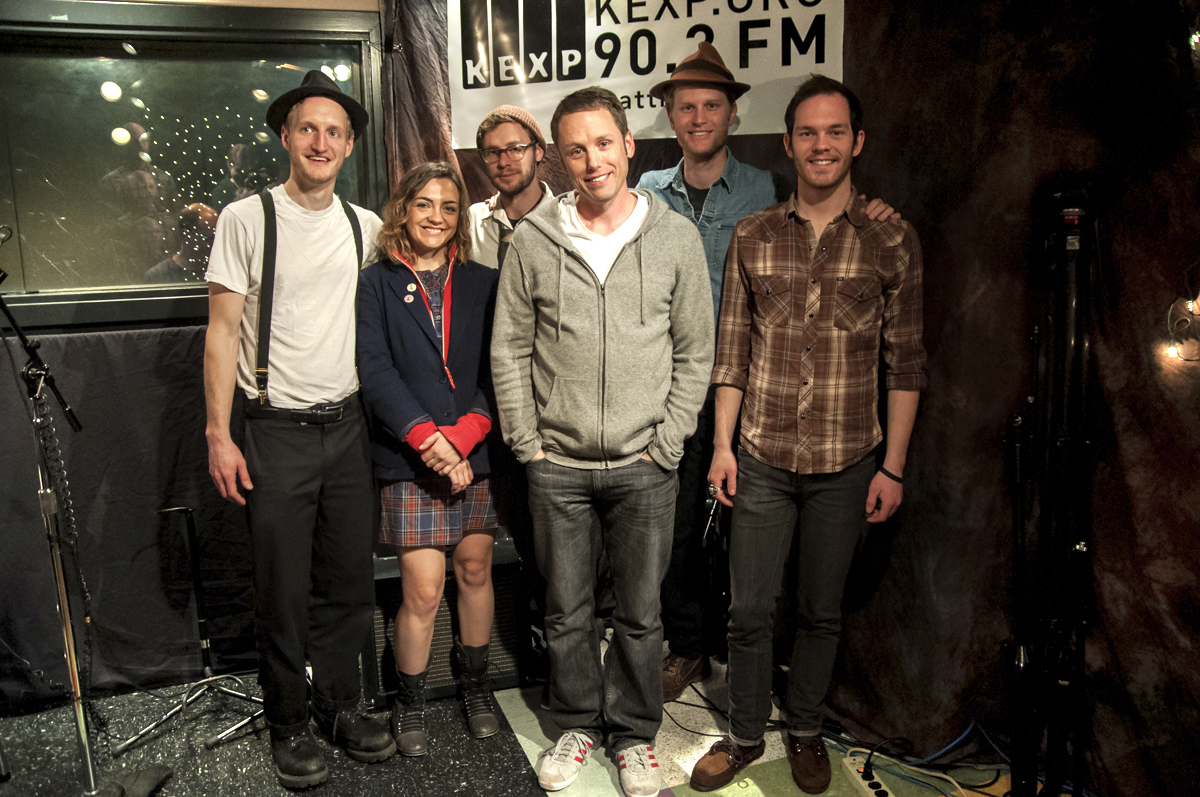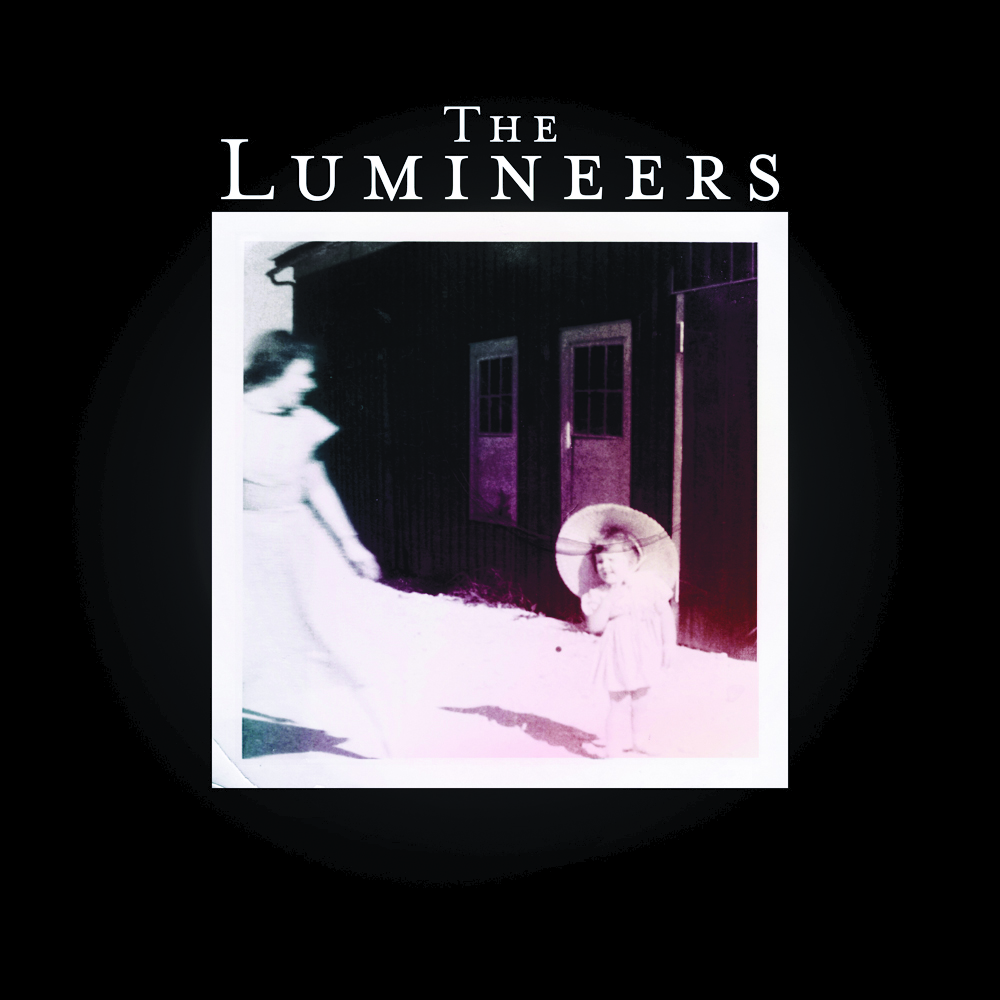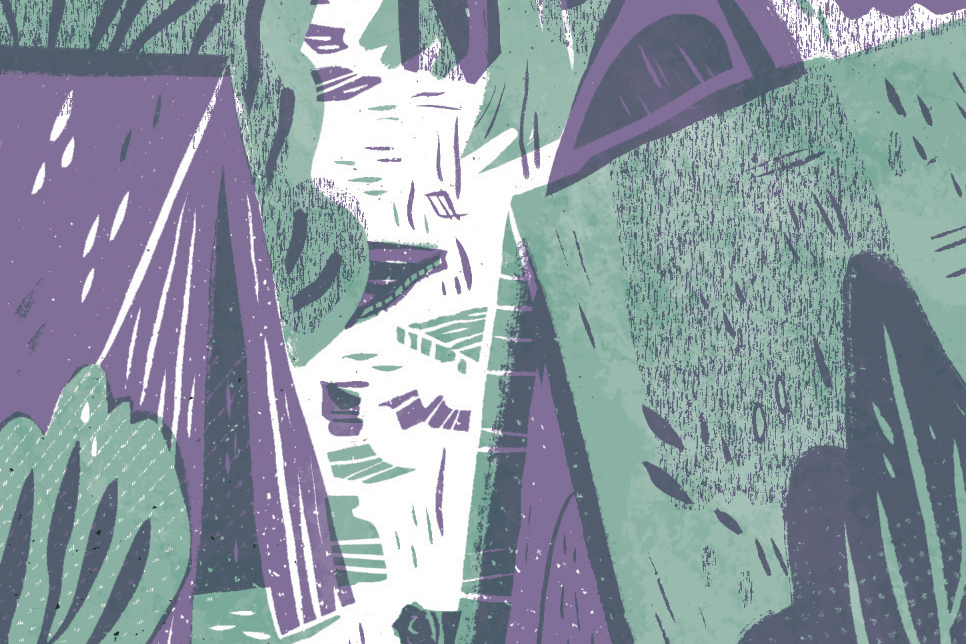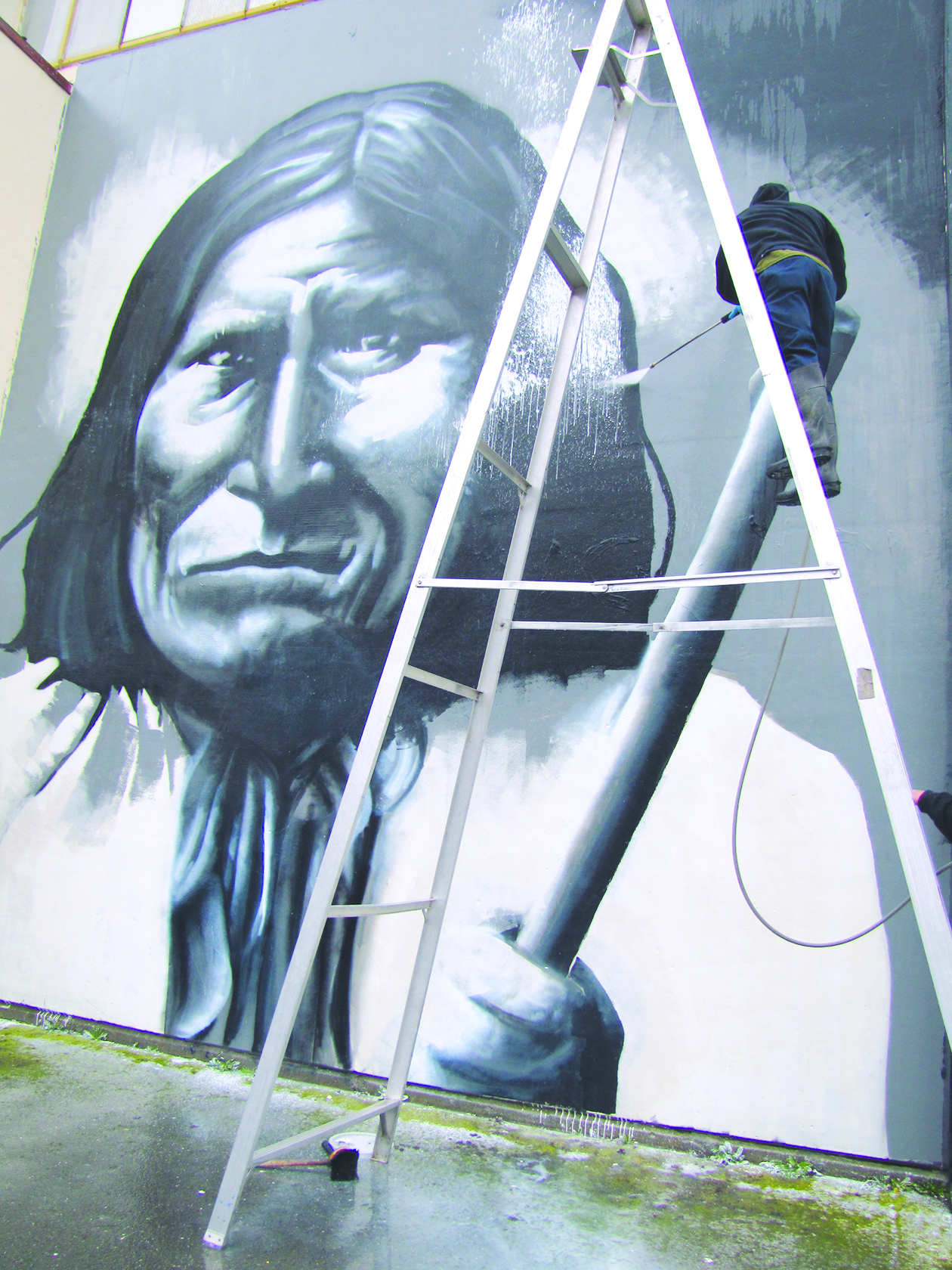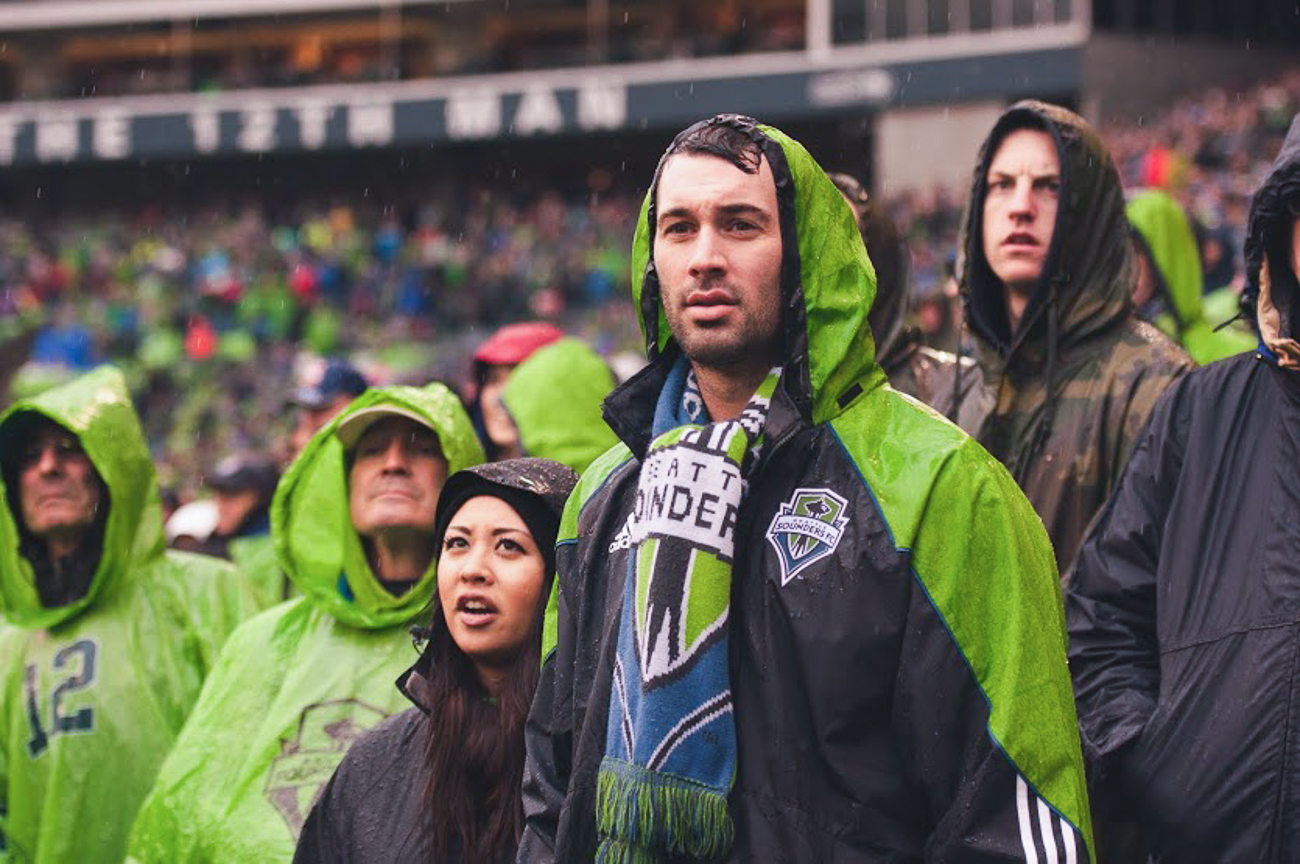On a snowy November day in 2010, Isaac Ravishankara went to see a band in Denver at “this girl named Tracy’s house.” After hearing one song, Ravishankara was so moved by the impromptu vibe of the moment and the rapt attention of the couple dozen people in attendance that he ventured to his car to retrieve his video camera.
“You can just feel it sometimes,” Ravishankara says of the performance. “It was very spur-of-the-moment.”
The band was young, not long removed from the New York music scene from which it had escaped to Denver. There was little footage of the band online. As a favor, Ravishankara uploaded to his YouTube page several songs captured during the evening.
One of them was “Ho Hey,” now recognized as one of the most inescapable songs of the past year. v The band, of course, was the Lumineers.
That same month, 1,200 miles away, George Ryan traveled from Seattle to Portland to work on a music video production project called The Sights of Sounds. It was then that Ryan met Wesley Schultz and Jeremiah Fraites, the Lumineers’ two founding members. He also met Neyla Pekarek, a cellist the duo had picked up in Denver via a Craigslist ad.
“They were just super-genuine, authentic, warmhearted individuals,” says Ryan, who now manages a farm in San Diego. “I just thought, ‘These guys need to make it.’ They had the whole package.”
Nearly three months later, in February 2011, Clark Smith was at the Crocodile in Belltown, probably wondering if he were about to lose his job. Then an A&R man at Seattle’s Onto Entertainment—a local music-management company and record label—Clark had been pitching Seattle bands almost exclusively, says his boss, Christen Greene. She informed him that if he didn’t bring an idea for a band to sign from outside the city, his job might be on the line.
“[Smith] kept bringing in Pacific Northwest bands, and I was like, ‘No more. We’ve got Fences. We have Hey Marseilles. Lonely Forest is taken. The Head and the Heart are taken,’ ” says Greene, sitting in a corner of the 5-Point Cafe—which her Onto partner Dave Meinert owns—sipping straight whiskey at 4:30 p.m. on a Thursday. “The well was a little dry, you know?”
At the Croc, the night before the next Onto A&R meeting, Smith (who no longer works for Onto and declined to be interviewed for this piece) commiserated over a drink with his friend Ryan, who was working as a caterer that evening. Ryan told Smith not to worry: Just pitch this band from Denver called the Lumineers.
It wasn’t a tough sell. Smith brought in the “Ho Hey” YouTube video from “this girl named Tracy’s house” to the meeting the next day, “and everybody was like, ‘Fuck yeah,’ ” remembers Greene.
“We were like, ‘Shit, this is killer,’ ” Meinert agrees.
“The funny thing about that video is it wasn’t planned,” says Schultz, the Lumineers’ lead singer and the song’s co-author. “If we knew how important that video was going to be, we probably would have tried a lot harder.”
Onto moved fast. Greene hopped on a plane, flew to New York to catch the Lumineers’ next show, and convinced the unknown Denver band to sign with an unknown management company from Seattle.
“They were sort of the first ones who talked to us,” recalls Schultz of Onto’s courtship. “We were just kind of taken aback that someone would spend money on a plane ticket to come see us.
“After the show she bought us a drink,” he continues. “Now I’m like, ‘What’s going on here?’ We’d never been treated that way.”
According to Greene and Meinert, Onto’s pitch was simple: The Seattle-based team had the experience, tenacity, connections, and business sense to take the Lumineers where they wanted to go.
“There’s a bit of a sell,” says Meinert, whose past includes co-owning and producing the Capitol Hill Block Party and managing the return of the Presidents of the United States of America. “It’s like anything in the business.” Sitting next to Greene at the 5-Point, unshaven, he counters Greene’s whiskey with a plate of veggies and hummus.
“That hustler side of her really appealed to me,” Schultz says of Greene. “I wanted someone who had something to prove and was hungry. I like Dave because he’s the guy who has a lot of experience. You have that experience on one side and you have that ambition on the other. It’s a nice mix.”
After Greene flew across the country to meet the band, Schultz says, “We felt on top of the world.” The next night, however, a show in Portland, Maine, sealed the deal. Twenty-four hours after being propositioned by Onto, the band played to a near-empty room, and actually bought beers for folks to keep them around. According to Schultz, it was this humbling experience that inspired the band to sign with the Seattle-based management team.
“We’d outgrown our resources,” he says.
…
Producer Ryan Hadlock is no stranger to successful records. His list of credits includes work with The Gossip, Blonde Redhead, Ra Ra Riot, Milo Green, and Brandi Carlile. Shortly after South by Southwest in 2011, Greene gave him the Lumineers’ demo. Like a handful of folks before him—and millions after—Hadlock remembers feeling an immediate emotional connection to the band’s music.
“I put it in my car and listened to it,” Hadlock says, “and it kind of blew my mind.”
A potential roadblock, however, was money. Hadlock knew he wanted the Lumineers to record at his Woodinville studio, Bear Creek, but the budget Onto and the band had for their debut record was small—“a very indie, DIY budget,” according to Hadlock. So small, in fact, that he and his manager couldn’t see eye-to-eye on the project. Hadlock sided with the band, aiming to make the situation work. He says the decision cost him a manager, but was worth it.
“I think we realized he was taking a chance on us,” says Schultz, “because straight-up we just didn’t have any money.”
Schultz says choosing Bear Creek was a pretty easy decision. A converted turn-of-the-century barn situated amid towering trees on 10 acres just off Woodinville’s Maltby Road, the studio sells itself. Eric Clapton, James Brown, Lionel Richie, Soundgarden, the Foo Fighters, and countless other notables have made the trek to Woodinville to record in this quintessentially Northwest locale. Opened by Hadlock’s parents in 1977, Bear Creek has been responsible for everything from Heart records to jingles for Rainier Beer and Ivar’s. A day’s recording accomplishments are often toasted over bonfires on chilly Snohomish County nights.
Hadlock, who took over for his “hippie” parents, runs the Bear Creek knobs with studio manager Jerry Streeter. A tour reveals planks of wood that originally adorned the outside of the barn, now hanging inside and warming the sounds of the studio’s appropriately named “Wood Room.” Candid photos of past visitors, from the Strokes to the Afghan Whigs to Dave Grohl, all mugging for the camera, plaster the walls. Brandi Carlile liked recording at Bear Creek so much she named her last record after it.
“What you’ve got to remember about a studio is you’re trying to create a very natural feeling in a very unnatural setting. [Bear Creek’s] whole vibe was amazing,” says Schultz. “[Hadlock] was just a really good producer for us. He wasn’t so much about getting it perfect as he was about fostering a vibe.”
Hadlock was one of the first Pacific Northwesterners to “get” the Lumineers. He’d be far from the last.
In June 2011, the Lumineers spent two weeks with Hadlock laying down the body of music that has since netted multiple Grammy nominations, landed the band on the cover of Billboard magazine, and become so culturally ubiquitous that Taylor Swift is even covering “Ho Hey” on her ongoing Red Tour.
….
At 4:30 a.m. on a January morning in 2012, KEXP’s John Richards was looking for something awesome. As usual, a stack of CDs sat by his desk waiting to be scoured for songs that might fit on the indie radio station’s airwaves. KEXP estimates it gets 200 CDs through the mail every week, roughly 500 songs via e-mail, and about a dozen albums hand-delivered. That morning, one of those hand-delivered CDs came from Onto.
“Every once in a while, it happens,” Richards recalls of hearing “Ho Hey” for the first time. “I put it in and I was blown away. I couldn’t believe it. I thought, ‘This is one of the catchier songs I have ever heard, and it has the perfect formula of what’s kind of been building in the music industry.’”
A month earlier, “Ho Hey” had been featured, in its entirety, on the CW show Heart of Dixie, an exercise that led many to search the Internet for any trace of the song or the band. With aesthetically compatible artists like Mumford and Sons blowing up, the timing was perfect. But aside from Ravishankara’s video, there wasn’t much online, and very little critical assessment.
It was Richards’ decision to play “Ho Hey” not once, but twice—back-to-back—that morning that many mention as a turning point for the Lumineers. Richards would repeat his double play of “Ho Hey” throughout the week. “It’s maybe a few times a year you get something this tremendous,” he says. “As it’s playing I thought, ‘I’m totally playing that again.’ For some reason, it touched a nerve with people, in a good way.”
Richards says it was the first time he’d ever played a song back-to-back like that. Radio jocks and programmers—not just on rock and pop stations, but also on those that play alternative, adult-contemporary, Top-40, and even country—have had it in heavy rotation ever since.
“This is what you call a smash,” says Dwight Douglas, spokesperson for Mediabase, a company that tracks airplay.
….
Just as Richards was having his “Ho Hey” moment, Paul Roper, president of Nashville’s Dualtone Records, was having his. He officially signed the Lumineers to a rare, one-record deal the same month that Richards broke “Ho Hey.”
“We were blown away by the authenticity that surrounded their music and their art,” says Roper. “Christen and Dave are very independent-minded at heart. So I think a natural extension of how they do business was that they were kind of at home with an indie [like Dualtone]. . . . That independent spirit fueled a lot of our conversations.”
Instead of going for the quick advance and glamour of a major label, the Lumineers retained control over the record’s sound and ownership of the masters in their deal with Dualtone. They’ve been stomping and clapping to the bank ever since. The deal not only gives the band a larger share of album, touring, and merchandise profits, but it leaves them free agents who, when it’s time to release their next record, can bring to the bargaining table a resume boasting a megahit.
According to Roper, Dualtone was game to strike a one-record deal with the Lumineers because the company realized the band had something special. The idea was to set up a relationship where, if all parties involved agree, Dualtone could be involved for “the long haul.”
“We only sign a couple bands a year, and that’s by design,” says Roper. “We were willing to do that because we knew, at the end of the day, our work was going to stand on its own legs.”
That doesn’t mean the record hasn’t greatly outperformed Dualtone’s expectations. Says Roper: “We thought we would sell 20,000 albums.” Released on April 3, 2012, The Lumineers sold more than 10,000 copies its first week, hit 20,000 in three, and went platinum—selling more than a million copies—in February. As of last week, The Lumineers had sold 1.2 million copies in the U.S., “Ho Hey” more than four million—far and away Dualtone’s most successful.
Seattle fans led the charge. For the first seven weeks the album was on sale, more copies of The Lumineers were sold in the Seattle/Tacoma market—the nation’s 13th largest—than anywhere else, outselling New York, Los Angeles, and even the band’s hometown, Denver.
“I think John Richards really set it off,” says Schultz. “It was really crazy to end up on that station, with a guy like [Richards], putting it on twice in a row. No one made him play it.” Indeed, no one did, just as no one made Onto’s Greene and Meinert take a chance on a band based on little more than a YouTube clip, and no one made Hadlock go against his manager’s advice to produce that band’s record.
“I think there are some true tastemakers in the industry there,” Schultz says of the Pacific Northwest and the way the region helped launch the band’s career. “Seattle’s sort of a kingpin.”
mdriscoll@seattleweekly.com
The Lumineers play the sold-out Sasquatch! music festival on May 22, and will soon announce a show at Redmond’s Marymoor Park.

